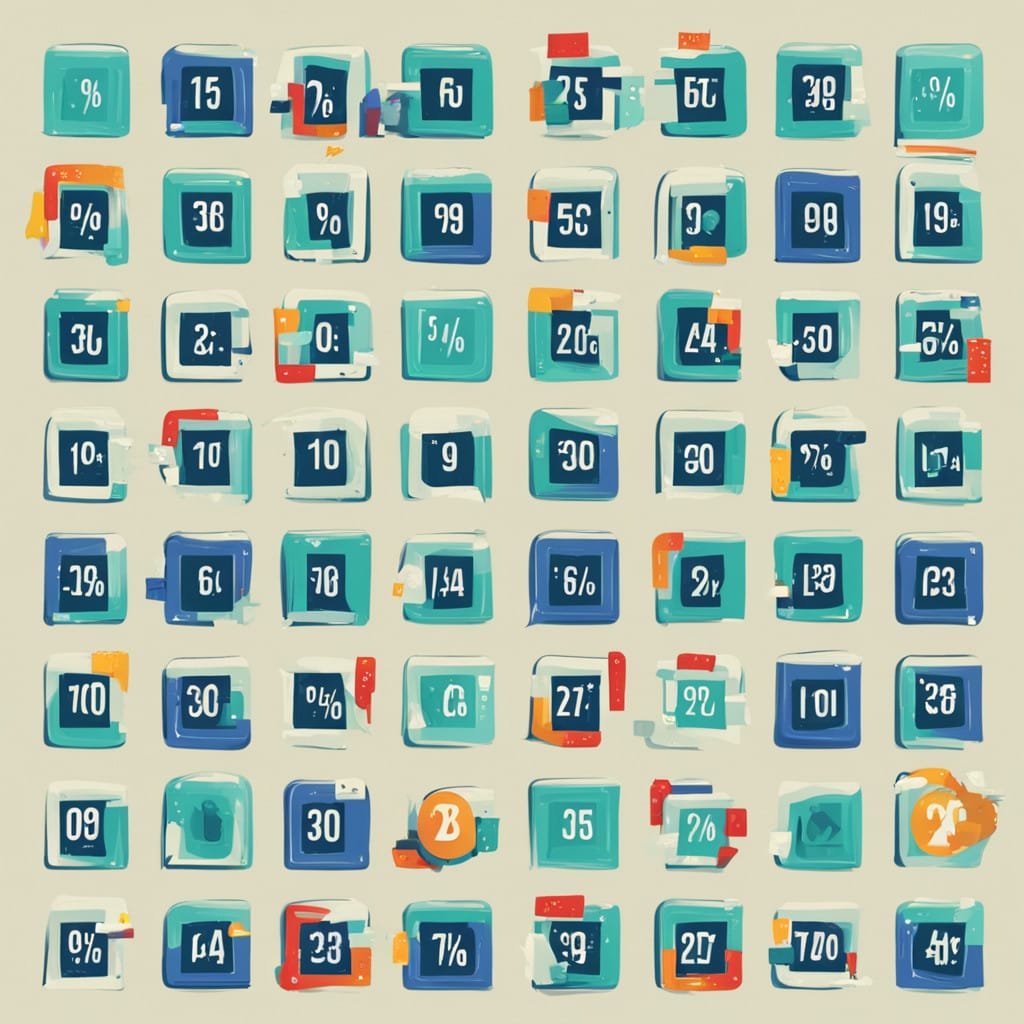
The image above was made with stable diffusion using the prompt 'percentage signs in the future.'
The Monty Hall Problem is a question of probabilities. In 1990, according to this article a reader wrote to columnist Marilyn vos Savant to ask her to answer this variation of the problem:
Suppose you're on a game show, and you're given the choice of three doors. Behind one door is a car, behind the others, goats. You pick a door, say #1, and the host, who knows what's behind the doors, opens another door, say #3, which has a goat. He says to you, "Do you want to pick door #2?" Is it to your advantage to switch your choice of doors?
"Yes; you should switch," she replied. "The first door has a 1/3 chance of winning, but the second door has a 2/3 chance."
This reply attracted 10k letters from readers telling vos Savant that she was mistaken. She wasn't mistaken, of course. She was literally the smartest woman in the world and her answer was provably correct. Here's how easily it can be verified with python using a rudimentary implementation of the Monty Carlo method:
import random
def monty_hall_simulation(num_trials):
switch_wins = 0
for _ in range(num_trials):
car_position = random.randint(0, 2)
initial_choice = random.randint(0, 2)
host_opens = next(i for i in range(3) if i != initial_choice and i != car_position)
switch_choice = next(i for i in range(3) if i != initial_choice and i != host_opens)
if switch_choice == car_position:
switch_wins += 1
switch_probability = switch_wins / num_trials
stay_probability = 1 - switch_probability
return switch_probability, stay_probability
# Run the simulation
num_trials = 10000
switch_prob, stay_prob = monty_hall_simulation(num_trials)
print(f"Probability of winning by switching: {switch_prob:.2f}")
print(f"Probability of winning by staying: {stay_prob:.2f}")
Notably, many of vos Savant's critics were recognized experts in mathematics. Lay persons following the story naturally believed this crowd of experts over the assertions of one woman. At the end of the day, however, these experts were all wrong and everybody who believed them was wrong to have done so. This is what I think of every time I hear someone parrot the questionable claims of popular experts, especially when it comes to matters that are more subjective than math.
Oftentimes, people simply don't know what they're talking about. And, like ChatGPT, they'll deliver their wrong information with perfect confidence. I personally have been guilty of this. I fell for the Proximal Origin psy op and believed that COVID arose in nature. I argued in favor of this theory for months, until it became clear that the paper I was basing my opinion on had been crafted as a propaganda piece by top officials and the evidence that the virus leaked from a lab became undeniable.
We all have incorrect information floating around in our minds. We're bombarded with lies at every turn in modern society so this is understandable. But instead of conforming to cultural norms by allowing my life to organize around these lies, I try to give them proper context. Whatever I hear, I assign it a relative probability of truth. Some items are zero or one, but the vast majority fall somewhere in between.
This can make the world feel more ephemeral than solid. My tolerance for uncertainty is exceptionally high, but I still find it unsettling to consider the implications of so much bad data in the total system. To mitigate my discomfort, I try to remind myself that there is no bad data. Every lie is good information when it's interpreted correctly.
There are social challenges associated with this perspective. It's hard to take people seriously when the probability of them being right is low. I try to take them seriously as people even if their facts are questionable. We're all swimming in questionable information, after all.
Read Free Mind Gazette on Substack
Read my novels:
- Small Gods of Time Travel is available as a web book on IPFS and as a 41 piece Tezos NFT collection on Objkt.
- The Paradise Anomaly is available in print via Blurb and for Kindle on Amazon.
- Psychic Avalanche is available in print via Blurb and for Kindle on Amazon.
- One Man Embassy is available in print via Blurb and for Kindle on Amazon.
- Flying Saucer Shenanigans is available in print via Blurb and for Kindle on Amazon.
- Rainbow Lullaby is available in print via Blurb and for Kindle on Amazon.
- The Ostermann Method is available in print via Blurb and for Kindle on Amazon.
- Blue Dragon Mississippi is available in print via Blurb and for Kindle on Amazon.
See my NFTs:
- Small Gods of Time Travel is a 41 piece Tezos NFT collection on Objkt that goes with my book by the same name.
- History and the Machine is a 20 piece Tezos NFT collection on Objkt based on my series of oil paintings of interesting people from history.
- Artifacts of Mind Control is a 15 piece Tezos NFT collection on Objkt based on declassified CIA documents from the MKULTRA program.